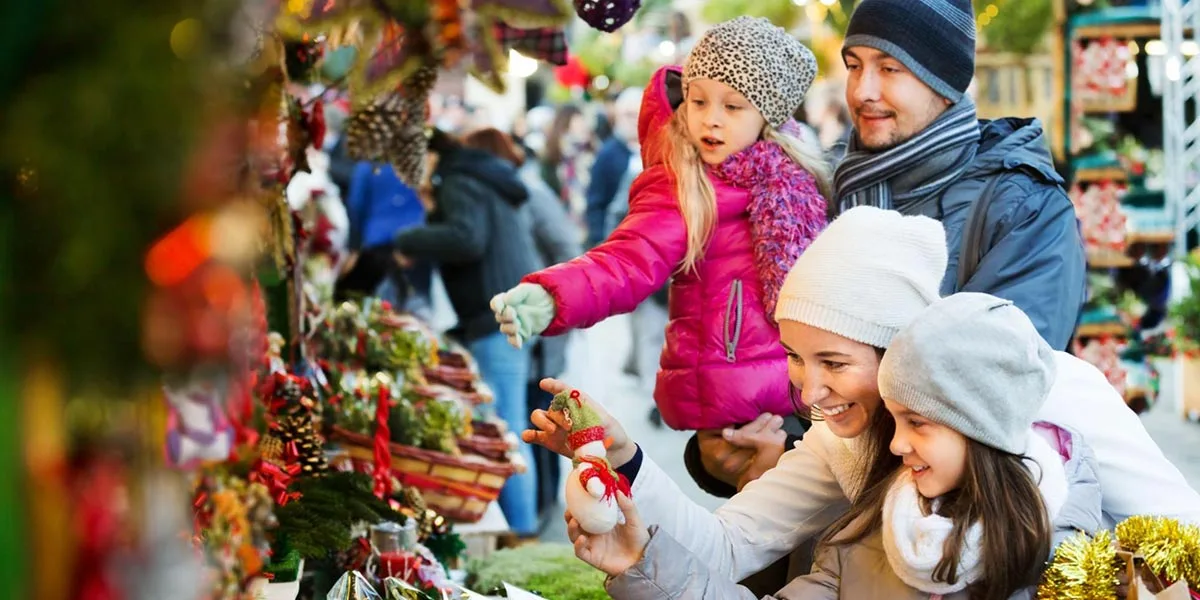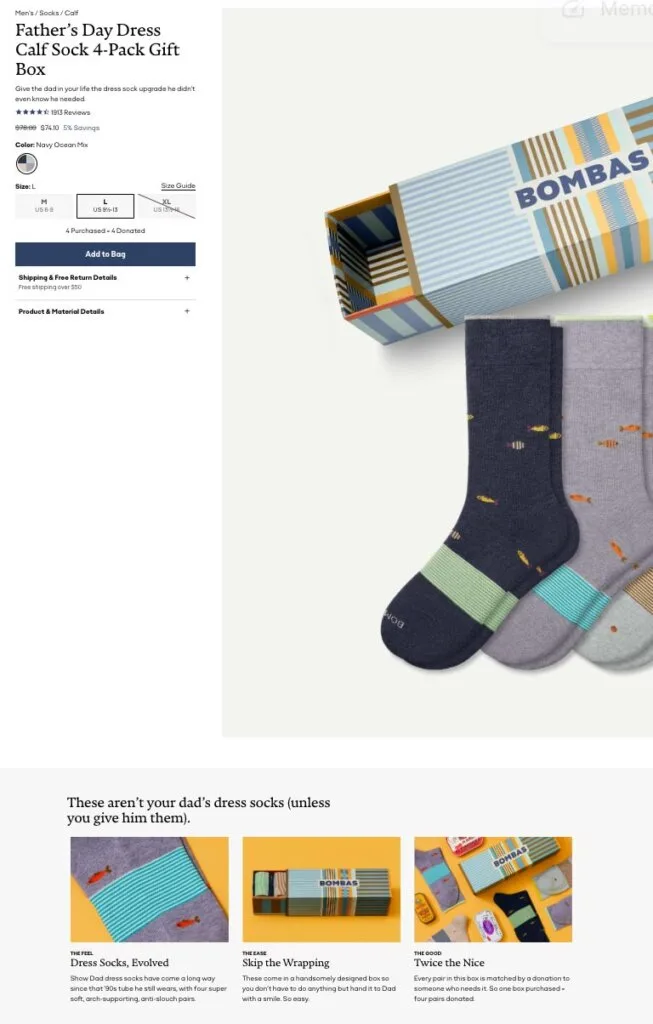Enterprise guide to seasonal marketing (+ a free cheat sheet)

Tight deadlines, ever-changing consumer preferences, and the pressure to stand out in a crowded market—seasonal marketing can be daunting. It’s easy to fall into the trap of recycling the same old ideas and strategies.
But what if there was a way to simplify the process with a few innovative techniques and ensure your efforts are on point? Use this comprehensive enterprise guide to seasonal marketing to take the guesswork out of the equation.
Implementing the key strategies from this seasonal marketing guide can streamline your efforts and help you achieve the results you’ve been striving for.
What is seasonal or tentpole marketing?
Seasonal or tentpole marketing is a powerful strategy that allows businesses to tap into the unique emotions, trends, and sense of urgency associated with different seasons, holidays, festivals, and events. By leveraging these opportunities effectively, you can create a strong emotional connection with your audience, position your brand as relevant and current, and drive engagement and sales during vital seasonal periods.
Apart from targeting national holidays and celebrations, seasonal marketing can also be planned to coincide with local or regional events to connect with segments of your audience.
How to develop an annual seasonal marketing blueprint in 5 steps

Enterprises that plan well can capitalize on seasonal trends, boosting engagement and sales. By anticipating key tentpole events, seasonal festivities, and holidays, you can create timely and relevant marketing campaigns that resonate with your audience. Here’s how to develop a comprehensive annual seasonal marketing blueprint.
Step 1: Conduct in-depth research
Conduct thorough market research to uncover your consumer behavior patterns and preferences specific to each season—like the overall purchasing habits, popular products during that season, market demands, and spending trends. Utilize tools like Treendly and Semrush to understand your audience’s seasonal preferences, and conduct social media listening and customer surveys to further gather accurate insights.
You can also use your internal consumer data as well as external industry-based research, like Yelp’s 2024 Industry-Specific Trends Forecast, to guide your analysis. Additionally, perform a competitive analysis by monitoring competitors’ seasonal campaigns to identify gaps and opportunities.
Remember that, at this point, you only need to find the holiday and event opportunities that can help boost your sales—you don’t necessarily need to analyze each season in-depth.
You can then use this foundational research to inform the subsequent steps in your annual holiday marketing strategy and give you a starting point when preparing the campaigns for individual events.
Step 2: Identify critical seasonal events
One key component of a successful year-round seasonal marketing plan is a clear timeline that outlines the major events and holidays relevant to your industry. Create a master list of all seasonal events, including major holidays and niche events that align with your brand.
You’ll find a cheat sheet further down with the major seasonal events around the year that you can refer to. But don’t forget to identify more niche events within your regional or local markets.
Prioritize all the events based on their relevance to your target audience, market demand, and potential return on investment (ROI).
Step 3: Develop a comprehensive timeline
Develop a detailed content calendar and timeline that maps out each event along with key milestones. This calendar should include critical dates for content creation, approval, creative deadlines, media planning sessions, campaign launch dates, and distribution, ensuring all content is delivered on time and aligns with your campaign milestones. Even better, create workback timelines to most accurately estimate when each step before completion needs to happen.
Tools like CoSchedule, Trello, Asana, or a simple Gantt chart can help you manage and visualize your marketing calendar effectively. This modular approach not only saves time and resources but also ensures that your seasonal campaigns are cohesive and impactful.
Ensure you discuss with your teams at this step to allocate sufficient time. Also make sure to include buffer time to account for unforeseen delays in creative development and approvals. This structured timeline will serve as your roadmap for planning, executing, and optimizing campaigns throughout the year.
Step 4: Create a modular seasonal content library
To improve the effectiveness of your seasonal marketing strategy, consider creating a centralized modular content library using a digital asset management (DAM) system like Bynder or Widen. This library should house evergreen content assets such as images, videos, templates, and copy that can be easily adapted for different seasons and big events. Organize these assets by category and event type and tag them for easy retrieval.
Such seasonal content libraries can work in tandem with your usual brand asset libraries to make it easier for you to repurpose high-quality content. This reduces production time and enables consistent campaigns. These assets could then be easily modified with seasonal themes, imagery, and messaging—based on the changing consumer behavior—and distributed across various channels such as email, social media, and in-store displays.
For example, an enterprise selling party supplies can create a folder for St. Patrick’s Day with links to products like green hats, green dye, green cups, green beanies, and other related items. So year after year, the marketing team can save time and directly dive into this folder to promote these products on St. Patrick’s Day. It’s also vital for the team to keep adding relevant seasonal products and promotional ideas to the library to keep it current.
With such a ready-to-use repository of high-quality, versatile content, you can significantly reduce production time and maintain a consistent brand experience across all touchpoints, ensuring that your seasonal campaigns are efficient and effective.
Step 5: Track and optimize
Once your seasonal campaigns are live, it’s crucial to measure their performance and optimize accordingly. Set clear key performance indicators (KPIs) for each campaign, such as engagement rates, conversion rates, and ROI.
Use analytics tools like Foursquare, LiveRamp, Mixpanel, HubSpot Marketing, or Fathom to track these metrics in real-time and gather actionable insights from both digital marketing and offline marketing efforts. Conduct A/B testing to determine which campaign elements are most effective, and make data-driven adjustments.
Post-campaign, perform a comprehensive analysis to identify successes and improvement areas—and note key ideas for next year’s marketing. This iterative process will help you refine your strategies and improve the performance of future seasonal campaigns.
Cheat sheet of seasonal + tentpole marketing events in each quarter
Stay ahead of the curve with our comprehensive guide to key marketing events throughout the year. This cheat sheet will help you plan your campaigns around major holidays, seasonal trends, and significant major events, ensuring you never miss an opportunity to engage with your audience. From New Year’s resolutions to Black Friday sales, we’ve got you covered for every quarter.
4 seasonal marketing tactics for enterprises to boost holiday sales

In the fast-paced world of marketing, staying ahead of the curve is essential. And when it comes to seasonal marketing, the stakes are even higher—with every competitor vying for your audience’s attention simultaneously. But with a few smart tactics, you can rise above the noise and capitalize on seasonal events, holidays, festivals, and tentpole moments to increase your holiday sales.
1. Leverage seasonal emotions and nostalgia
It’s crucial to leverage seasonal emotions and nostalgia to truly resonate with your audience during different seasons. As you conduct in-depth consumer research, focus on uncovering the specific emotions, memories, and nostalgic triggers that resonate with your target audience during various seasons. Utilize techniques such as ethnographic studies, focus groups, and sentiment analysis on social media to gain a deeper understanding of their seasonal experiences, traditions, and emotional associations.
With these insights, develop a content strategy that aligns with these identified emotions and creates an emotional connection. Craft compelling storytelling, visuals, and messaging that evoke the desired emotional responses, such as warmth, excitement, or nostalgia. Use relatable characters, scenarios, and themes that tap into your audience’s personal seasonal experiences and memories, making your brand feel part of their cherished traditions.
This can include humor as well. Take the Christmas advertisement of Roto-Rooter, the enterprise offering plumbing services. They created a simple yet humorous ad in the style of a claymation holiday special about how Roto-Rooter saves Christmas and is a quick solution to all plumbing issues.
Such amusing and whimsical videos that tie in with the seasonal events can help your customers view your brand on a closer, familiar, humane ground rather than one big impersonal enterprise.
You can also engage multiple senses by incorporating seasonal colors, scents, sounds, and textures into your product packaging, store ambiance, and marketing materials. For example, during the winter holidays, use warm, cozy colors, festive scents like cinnamon or pine, and crackling fireplace sounds to create an immersive, nostalgic experience that transports your audience back to their fondest holiday memories.
You can also encourage your audience to share their seasonal memories, traditions, and experiences through social media campaigns, contests, or themed hashtags. Curate and showcase this user-generated content to foster community, emotional connection, and brand loyalty. By doing so, you not only engage your audience but also create a shared space where their seasonal experiences are celebrated, further strengthening their bond with your brand.
2. Create seasonal scarcity and urgency
To drive sales and create a sense of urgency, it’s important to implement strategies that leverage seasonal scarcity. One way to do this is by offering exclusive seasonal collections or products for a limited time.
Utilize targeted messaging that communicates the urgency of seasonal offerings and conveys the message that these opportunities won’t last. Employ persuasive language and compelling visuals to highlight the scarcity of products or the fleeting nature of time-limited seasonal promotions, encouraging customers to seize the moment and make a purchase.
For example, Glossier launched a limited-edition Valentine’s Day collection a week before the actual day, featuring special packaging and exclusive products. Glossier promoted this campaign through social media ad campaigns, influencer partnerships, and email marketing.
Similarly, you can implement countdown timers, limited-edition labels, or scarcity indicators on your digital storefront, offline stores, and marketing materials to visually represent the limited nature of seasonal offers and create fear of missing out (FOMO).
You can also use Yelp Showcase Ads to create location-specific ads to highlight your limited-time offers. Use phrases like “Selling out fast,” “Limited stock available,” or “Get yours before everyone else does” to create FOMO among your audience as you approach the end of the offer.
This visual reinforcement with ads constantly reminds customers that they need to act quickly to secure their desired items before they’re gone.
3. Capitalize on cyclical demand with seasonal SEO
Certain products, services, and industries experience significant spikes in search volume during specific seasons. Through seasonal SEO, you can optimize your content and website for these seasonal keywords and position your brand to capture the attention of eager, high-intent consumers.
To start with, perform thorough keyword research to determine your brand’s most relevant and high-traffic search terms during specific seasons. Utilize tools like Semrush or Ahrefs to analyze search volumes, trends, and competitor rankings.
Develop an event-specific content strategy that aligns with your identified seasonal trends, ensuring that your blog posts, landing pages, and product descriptions are optimized for search engines and human readers.
Craft blog posts, guides, and landing pages that directly address the needs and interests of your target audience during these periods. For example, if you offer spring cleaning services, you can create blogs, videos, and practical guides around topics like “spring cleaning for busy families,” “how to spring clean garages,” or “DIY quick spring cleaning tips.”
If you have an online store, having a specialized page dedicated to the seasonal event, with a collated list of relevant products/services and discounts, is imperative.
Take Bombas, for example. For Father’s Day, the brand created a separate landing page with the best gift recommendations. But they didn’t just stop there. The brand also optimized the product’s description with messaging and seasonal keywords to target customers looking to buy a gift for their dads.

You can use tools like Keyword Tool or Moz Keyword Explorer to uncover keywords with high search volumes and low competition during that particular season. Implement schema markup on your website to help search engines understand your seasonal content more easily.
Remember to use analytics tools to monitor your seasonal SEO performance, including keyword rankings, organic traffic, checkout process, and conversion rates, and adapt your strategy based on them.
4. Use niche-specific opportunities and marketing approaches
While the principles of seasonal marketing can be applied across various industries, the most successful campaigns are those that deeply understand and cater to the unique needs and preferences of their specific verticals and their customers. By identifying consumer behaviors during seasonal trends and tentpole moments, you can create highly targeted initiatives that drive meaningful results for your business.
For example, the launch of a highly anticipated game like a new Call of Duty installment presents a prime opportunity for gaming peripheral manufacturers to market their latest headsets, controllers, or gaming chairs as the optimal accessories to enhance the new game’s experience. Fast-food chains and snack brands could also capitalize on this event through gamer-targeted promotions and limited-time product tie-ins.
Similarly, businesses in the fashion, beauty, and lifestyle spaces can leverage the sustained interest around major award shows like the Oscars or Grammys. Since people often take cues from celebrities’ red-carpet looks, enterprises in the space of cosmetics and apparel can run promotions highlighting the specific products used to achieve certain celebrity looks or offer tutorials on replicating award show hair and makeup trends.
To capitalize on such high-traffic periods, analyze the direct and tangential marketing opportunities between the seasonal events as your products. Develop comprehensive strategies that span the entire customer journey, from initial brand awareness to post-purchase retention. This may involve creating season-specific landing pages, offering exclusive discounts or bundles, and leveraging retargeting marketing to convert abandoned cart shoppers or past customers.
Enterprises with a national footprint can also localize their marketing efforts by tailoring campaigns to specific regions or states. You can leverage local festivals or celebrations to create a sense of community and resonance with segments of your target audience.
For instance, a Texas-based retailer could run promotions and campaigns around the state’s annual rodeo season, offering discounts on western wear or hosting in-store events with a rodeo theme. Similarly, a New Orleans-based restaurant could create special Mardi Gras-inspired menu items and decorations, tapping into the city’s rich cultural heritage, while enterprises having a presence in Portland can make use of the Portland Rose Festival to launch floral-themed products, rose-inspired dishes, or festive in-store experiences aligned with the city’s iconic celebration.
This region-specific approach allows brands to align their messaging and offerings with the unique seasonal experiences and interests of their diverse customer base.
Harness holiday magic to amplify your sales
The potential for growth during seasonal marketing campaigns is immense, but so are the challenges. From managing tight deadlines to creating content that cuts through the noise, seasonal marketing can put even the most experienced professionals to the test.
But with the right tactics from this enterprise guide to seasonal marketing and a solid brand-specific blueprint to guide you year after year, you can simplify your seasonal marketing efforts and maximize your ROI.
You can also adapt any one of these advertising strategies to position yourself as an authority in your niche to further fuel your seasonal marketing.